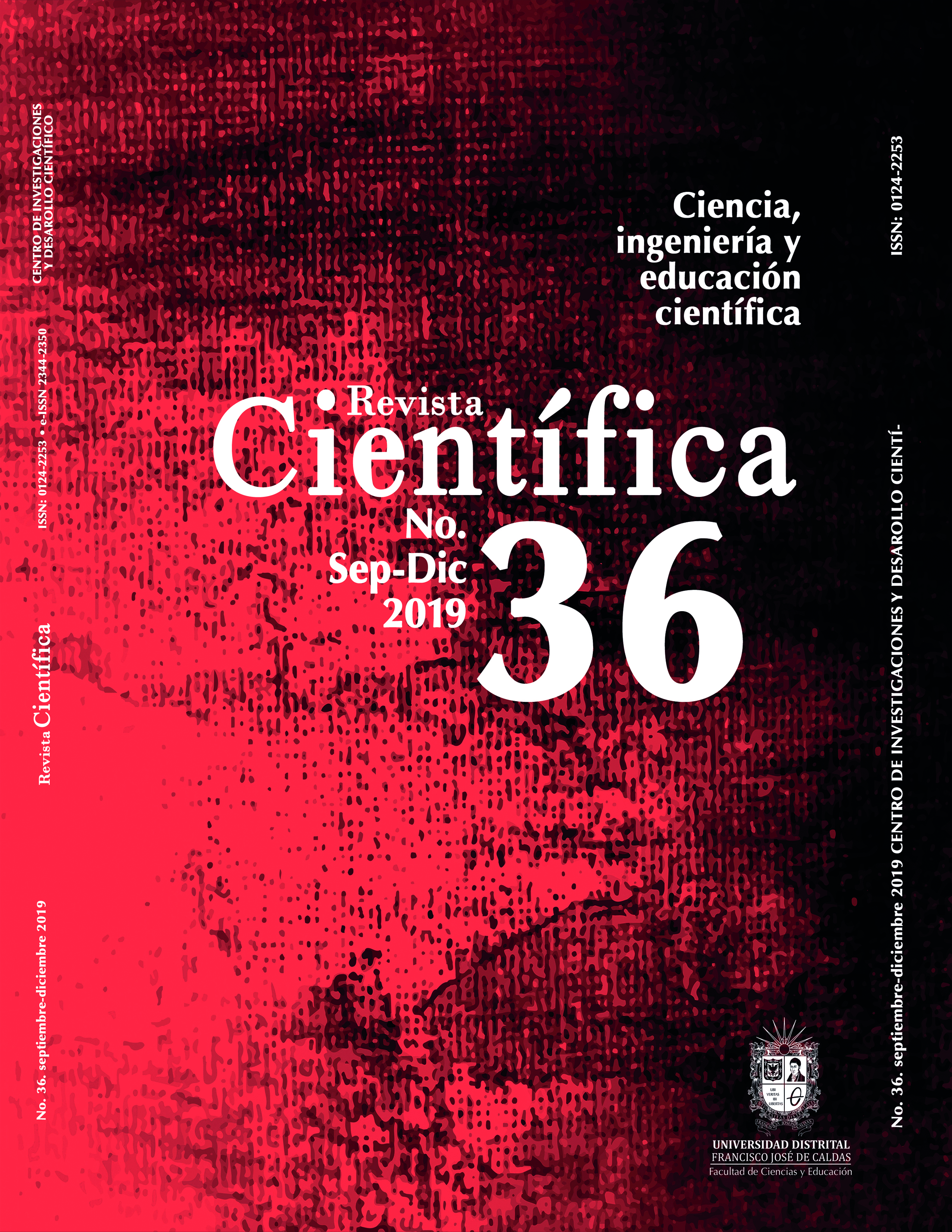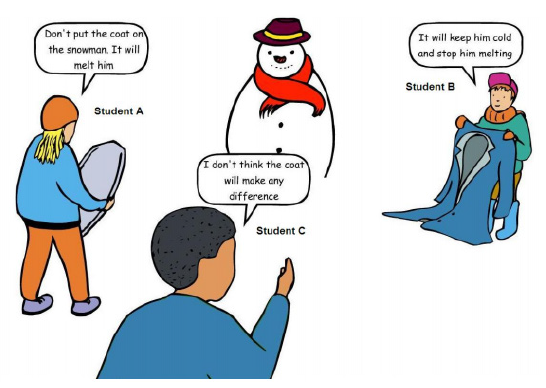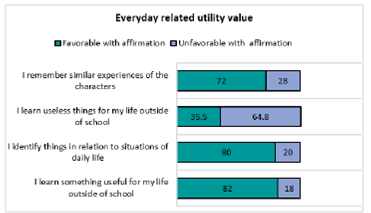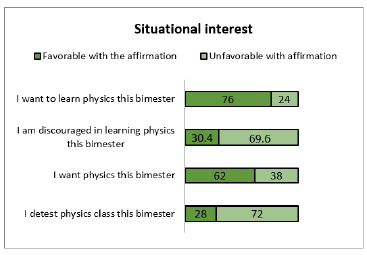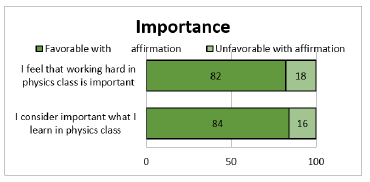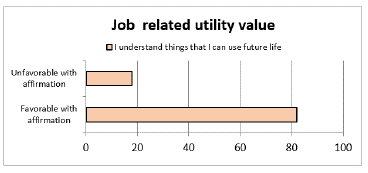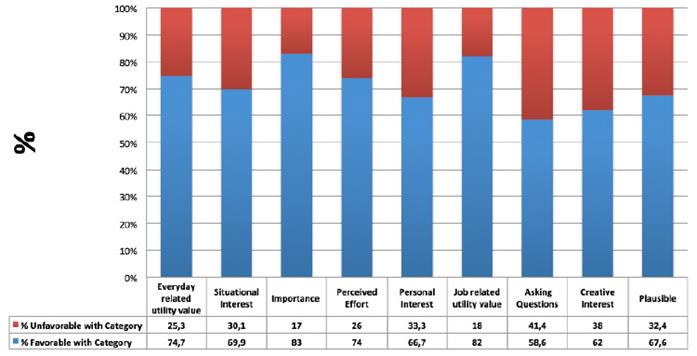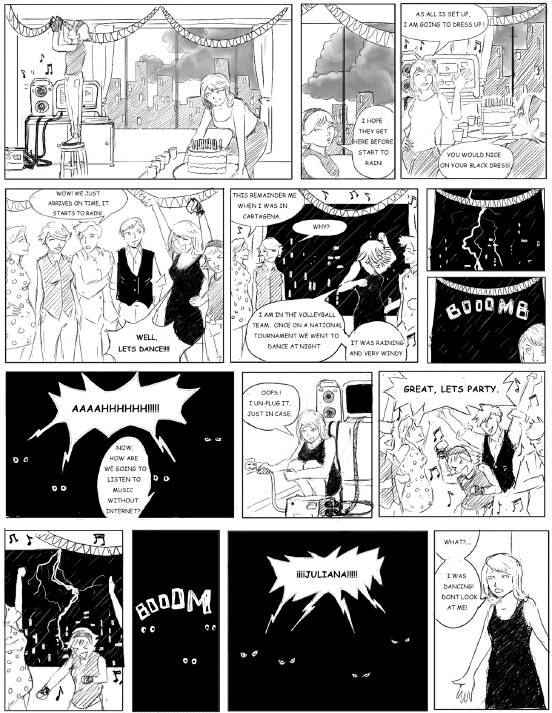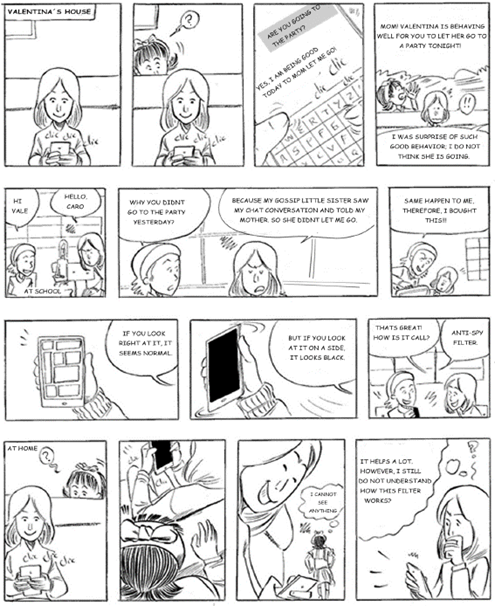DOI:
https://doi.org/10.14483/23448350.15156Publicado:
08/16/2019Número:
Vol. 36 Núm. 3 (2019): Septiembre-Diciembre 2019Sección:
Educación CientíficaTeaching physics through contextualized concept cartoons
Enseñanza de la física mediante Historietas Conceptuales Contextualizadas
Palabras clave:
innovation, narratives, motivation, learning, cartoons (en).Palabras clave:
innovación, narrativas, motivación, aprendizaje, comics (es).Descargas
Referencias
Bae, M. (2009). Using a Motivation-based Instructional Model for Teacher Development and Students. Michigan, EE. UU.: Universidad Estatal de Michigan.
Balim, A. G.; Inel-Ekici, D.; Özcan, E. (2016). Concept Cartoons Supported Problem Based Learning Method in Middle School Science Classrooms. Journal of Education and Learning, 5(2), 272-284. https://doi.org/10.5539/jel.v5n2p272
Cracker, D. (2006). Attitudes Towards Science of Students Enrolled in Introductory Level Science Courses. UW-L Journal of Undergraduate Research, IX, 1-6.
Ekici, F.; Ekici, E.; Ay-din, F. (2007). Utility of Concept Cartoons in Diagnosing and Overcoming Misconceptions Related to Photosynthesis. International Journal of Environmental & Science Education, 4(2), 111-124.
Eryilmaz, A.; Yildiz, I; Akin, S. (2011). Investigating of Relationship between Attitudes towards Physics Laboratories, Motivation and Amotivation for the Class Engagement. Eurasian Journal of Physics and Chemistry Education, 59-64.
Gutierrez, R.; Ogborn, J. (1992). A Causal Framework for Analysing Alternative Conceptions. International Journal of Science Education, 14(2), 201-220. https://doi.org/10.1080/0950069920140208
Hurtado, G. E. (2014). ¿Cuáles son las tendencias en las metodologías de enseñanza de la última década en iberoamérica?-¿Which are the trends in the teaching methods of the past decade in iberoamérica?. Revista Científica, 1(18), 86 - 99. https://doi.org/10.14483/23448350.5564
Hammer, D. (1996). The Physics Teacher. American Journal of Physics, 64, 13-16.
Kabapinar, F. (2005). Effectiveness of Teaching via Concept Cartoons from the Point of View of Constructivist Approach. Educational Sciences Theory & Practice, 5(1), 135-146.
Keogh, B.; Naylor, S. (1996). Teaching and learning in science: a new perspective. Presented at the BERA Conference, Lancaster. http://www.leeds.ac.uk/educol/documents/000000115.htm
Keogh, B.; Naylor, S. (1999). Concept cartoons, teaching and learning in science: an evaluation. International Journal of Science Education, 21(4),431-446. https://doi.org/10.1080/095006999290642
Keogh, B.; Naylor, S. (2000). Concept Cartoons in Science Education. Cheshire, UK: Millgate House Publishers.
Keogh, B.; Nailor, S.; Wilson, C. (1998). Concept Cartoons: A New Perspective on Physics Education. Physics Education, 33(4), 219-224. https://doi.org/10.1088/0031-9120/33/4/009
Naylor, S.; McMurdo, A. (1990). Supporting science in schools. Timperley: Nussbaum.
Naylor, S.; Keogh, B. (2013). Concept Cartoons: What have we learnt? Journal of Turkish Science Education, 10(1), 3-11.
Peacock, A. (1995). An agenda for research on text material in primary science for second language learners of English in developing countries. Journal of Multilingual and Multicultural Development, 16(5), 389-401. https://doi.org/10.1080/01434632.1995.9994614
Roncancio, J.; Romero, P. (2017). Teaching Polarization through Cartoons. Tecné, Episteme y Didaxis: TED, 41, 169-180. http://www.scielo.org.co/scielo.php?script=sci_arttext&pid=S0121-38142017000100169&lng=en&tlng=>
Şaşmaz, Ö.; Meriç, G. (2014). Seventh Grade Students’ Perceptions of Using Concept Cartoons in Science and Technology Course. International Journal of Education in Mathematics, Science and Technology, 2(2), 116-137. https://doi.org/10.18404/ijemst.86308
Şengül, A.; Serap, E. (2017). The Effect of Concept Cartoon-Embedded Worksheets on Grade 9 Students’ Conceptual Understanding of Newton’s Laws of Motion. Research in Science & Technological Education, 35(1), 58-73. https://doi.org/10.1080/02635143.2016.1248926
Solbes-Matarredona, J., & Torres-Merchán, N. Y. (2015). Alternativas para reflexionar aspectos críticos de la ciencia en el aula. Revista Científica, 2(22), 31-44. https://doi.org/10.14483/10.14483/udistrital.jour.RC.2015.22.a3
Stephenson, P.; Warwick, P. (2002). Using Concept Cartoons to Support Progression in Students Understanding of Light. Physics Education, 37(2), 135-141. https://doi.org/10.1088/0031-9120/37/2/306
Taslidere, E. (2013). The Effect of Concept Cartoon Worksheets on Students’ Conceptual Understandings of Geometrical Optics. Education and Science, 38(167), 144-161.
Wormeli, R. (2012). Motivating Students to Step up. Middle Ground, 15(4), 40-41.
Saavedra-Bautista, Claudia Esperanza, Cuervo-Gómez, William Oswaldo, y Mejía-Ortega, Iván Darío. (2017) Producción de contenidos transmedia, una estrategia innovadora. Revista científica , (28), 6-16. https://dx.doi.org/10.14483/udistrital.jour.rc.2016.28.a1
Cómo citar
APA
ACM
ACS
ABNT
Chicago
Harvard
IEEE
MLA
Turabian
Vancouver
Descargar cita
Visitas
Dimensions
PlumX
Descargas
Recibido: de febrero de 2019; Aceptado: de abril de 2019
Resumen
En este estudio se investigó el uso de historietas en la enseñanza de la física. La metodología de enfoque mixto involucró el diseño y uso de Historietas Conceptuales Contextualizadas, así como su validación e implementación entre grupos de estudiantes de secundaria. Posteriormente, se adaptó y aplicó una escala motivacional sobre el uso de los dibujos animados y la enseñanza de la física. Los resultados obtenidos describen las características de las preguntas formuladas por los estudiantes al interactuar con la caricatura, en relación con el conocimiento científico y los conceptos asociados a tres fenómenos estudio, las descargas eléctricas, la polarización y la corriente eléctrica. Además, se identificó el potencial didáctico de las historietas en relación con las categorías de la escala motivacional, que destaca los niveles de motivación significativos asociados a la vida cotidiana y la clase de física.
Palabras clave:
aprendizaje, comics, innovación, motivación, narrativas.Abstract
The use of cartoons in the teaching of physics is researched in this study. The methodology of this mixed approach involves the design and use of concept contextualised cartoons and their validation as well as implementation among groups of high school students. Subsequently, a motivational scale regarding the use of cartoons and the teaching of physics is adapted and applied. The results obtained describe the characteristics of questions formulated by the students when interacting with the cartoon, specifically in relation to the scientific knowledge associated to three phenomena of the study, namely atmospheric electric discharges, i.e. thunderbolts, electric current and polarisation. Furthermore, the cartoons’ didactic potential was identified in relation to the categories of the motivational scale, which highlights significant motivational levels associated with the relationship of life and the importance of the physics class.
Keywords:
innovation, narratives, motivation, learning, cartoons.Introduction
Concept Cartoons
Concept cartoons (CC) are defined as a mean to present alternative ideas of scientific concepts (Naylor and McMurdo, 1990; Guttierrez and Ogborn, 1992; Peacock 1995; Keogh and Naylor, 1996, 1999.) Their origin arises from a constructivist strategy enabling teachers to identify students’ ideas on scientific concepts and the way these are put into effect when interacting with a CC. The CC examples (figure 1) reveal their format, comprising a graphical representation of a generally static situation, where the characters assume different conceptual perspectives.
Figure 1: CC in science education
CC are static situations without association of a narrative that presupposes a temporal or sequential line about its origin. They have been assumed from an independent approach to comics as history or to cartoons as humour or satire (Keogh and Naylor, 1999; Ekici, Ekici and Aydin, 2007). Its design benefits from the use of short texts in the presentation of scientific phenomena related to real life. The text must also present alternative ideas for the phenomenon and a valid scientific background for all ideas to have the same status within the cartoon (Keogh, Naylor and Wilson, 1998, Kabapinar, 2005 Orden ECI. These alternative ideas should be based on educational research based on students' conceptions (Stephenson and Warwick, 2002; Sasmaz-Oren and Meriç, 2014).
Şaşmaz-Oren, F. and Meriç, G. (2014) integrated CC into worksheets of Newton’s laws (figure 2) following the constructivist approach, where students confront their systems of ideas and execute actions and class discussions to reach new conceptual balances. In their opinion, the variation of this study compared with regular uses of CC in literature considers that the constructivist approach contributes to the conceptual understanding of Newton’s laws of motion.
Figure 2: Seventh grade students’ perceptions regarding the use of concept cartoons in a science and technology course.
Generally, these studies assumed CC from a minimalist approach in the use of the language (Naylor and Keogh, 2013; Taslidere, 2013), immune to humour, satire and connection or contextualisation within a specific narrative. However, the real language matters and its narrative context are likewise relevant. In conjunction with the lack of research that assumes CCs from a situated, contextual and sequential perspective, such situations, in the case of the teaching of physics, provide evidence of a breach in this line of inquiry. By omitting conceptual cartoons as part of a narrative, the contextualised process also takes into account basic elements of scientific phenomena, postures or alternative interpretations based on the research regarding the student’s conceptions.
Hence, the contextualised concept cartoon (CCC) requires a design based on the teaching and learning interests of physics, and for each constructed story it was sought to characterise its didactic potential within the framework of the generation of questions and students’ motivation towards the class of physics. Therefore, the following queries were stated: What types of questions do students construct in the context of CCC? To what degree do they declare themselves motivated towards the physics class as a result of the use of CCC?
The importance of this work is to contribute to the characterisation of the CCC as a line of didactic research within the framework of teaching proposals, where the learning context acquires greater significance in the construction of questions and the promotion of motivation towards physics. Consequently, the interaction with the comic offers another opportunity to learn.
Methodology
The research is based on a qualitative exploratory approach in the search to characterise the sense that students attribute to their actions in the context of interaction with the CCC, particularly in connection with the motivation to learn physics. This process involved the design and validation of each story with teachers and a group of high school students from a school in the city of Bogotá as phase 1. Moreover, a preliminary design of the cartoon was implied based on the identification of the natural phenomenon and the context, which is part of the script sent to the illustrator to build the sketches. Afterwards, such sketches were validated by a focus groups of students, teachers and the research group.
The implementation of the final version of the CCC within the group of students allowed posing questions, and subsequently a Likert scale motivation questionnaire adapted from Bae (2009) with five response options was applied. The distribution of items by sub-category (S), as well as the number (N) of associated questions is shown in table 1. Motivation is the way we help students reveal themselves (Wormeli, 2012).
Table 1: Categories of the Likert scale of motivation.
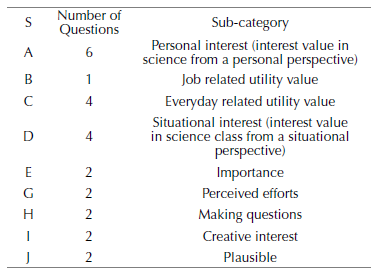
Source: adapted from Bae (2009).
The last three items were added for total fulfilment of the research objectives. Item H explores the possibility of formulating questions from the cartoon, item I inquiries about the creative interest that the cartoon favours in the interviewee to build their own comics, and item J examines the credibility of the cartoon’s situation. Additionally, the adaptation of the Bae scale also consisted of distributing the sub-category of personal interest (Personal Interest) within the entire scale, since in this case the use of the cartoons does not correspond to the beginning of the school year. Results of the validation process, which included the concept of a professional in educational psychology, physics teachers and members of the research group, made the corresponding adjustments and proceeded to design the final version for piloting with 25 students in 11th grade of a public school of the city of Bogotá.
The implementation process comprised three sessions corresponding to the interaction with each of the comic strips, where students were free to exchange the ideas generated by the material (see figure 3). At the end of the implementation of the comic strips, we proceeded with the application of the Likert scale of motivation with the group of students and their respective analysis.
Figure 3: Implementation of CCC in physics class and process of result’s analysis.
Results and Analysis
Results are presented in accordance with the methodological process. First, the CCC is described, along with the analysis of the student’s questions resulting from their interaction with the conceptual cartoons. Secondly, the results and analysis of the application of the Likert scale (Alpha 0, 89) on motivation is presented.
Cartoon and Questions
The CCC consists of a set of sequential vignettes, in which the development of everyday situations susceptible of being explained by theories and or scientific concepts is illustrated. Unlike the developments in CC, this work contextualises the conceptual cartoon in time and space, i.e. place of development. Moreover, dialogues and texts acquire the connotation associated with the characters in relation to their interactions with concrete objects or with other characters. The format of this work is a page that may or may not be connected to other cartoons. For this research, two CCC (the stove and the lighting) were designed and the CCC of the Anti-Spy filter (Roncancio and Romero, 2017) was replicated.
The Stove1
The aim of the cartoon is to show the interactive experiences of the characters (a family with a father, mother and daughter, who is a university student) with the stove in the kitchen. The father and daughter react similarly when they touch the stove, as they feel an electric shock. The mother’s interaction with the stove is associated with the technical fix of the ‘short circuit’ that caused the sensation of the electric shock.
In this cartoon, students construct associated questions or affirmations with electricity, materials and artefacts, where they reveal the relationships they establish as follows: ‘How is it possible that electricity makes contact with some materials and not with others? When current comes in contact with objects, those objects can acquire changes’ (Annex 1).
Moreover, questions regarding the causes of the situations are presented, for instance: ‘What was wrong with the stove? What could be the cause of a short circuit? Did it have something to do with the coffee machine being turned on at the same time as the stove?’
The Lightning2
This story presents situations associated with atmospheric electrical discharge in the context of interaction of a group of young people: a party or rumba (Annex 2). The story recreates the characters’ reaction in relation to two electric shocks (lightning) and their activity in the meeting.
In the cartoon with the electric beam, some questions seek explanations regarding the relationship among situations. For example, ‘How can electrical storms cause a short circuit? Why do they not disconnect the appliances, having seen the thunderbolts? They should not have parties during a storm. Why did not they take more care with all the connected appliances knowing that it was raining? Did she unplug it to avoid a short circuit? Did the blackout really happen because of the lightning? Will the equipment be damaged by the blackout? (My dad says that happens sometimes) Why did they continue the party even if it was raining and lightning?’
These questions connect the phenomenon of atmospheric electric discharge with the functioning of electronic devices, where a causal principle is revealed and questioned, namely that lightning can produce alterations or ‘short circuits’ in electronic devices. This also includes elements of distinction of preventive behaviour for these situations, i.e. linking of situations, by calling attention to the care or avoidance of organising events in stormy, rainy conditions. The students’ questions show their implicit ideas of the relationships between the situations associated with atmospheric electric shock for the context illustrated in the cartoon.
Some questions are presented here about possible causes such as ‘Did lightning strike the circuit box in the area? Did the blackout cover the entire area? Was the lightning related? Could it be that the thunderbolt caused the blackout?’ where knowledge of the consequences of ‘lightning strikes’ in relation to the local electricity flow is evident.
In addition, questions or statements arise, where students provide explanations regarding the phenomenon of electric shock and the context of the cartoon, for example: ‘In conclusion, the lightning bolt cut the electricity at the end and ruined the party due to the storm. I don’t agree with Juliana being blamed, as it was the lightning that really spoiled everything. The lightning hit the neighbourhood fuse box. Maybe she disconnected the internet because of the lightning, so it wouldn’t get damaged, and as she reconnected it again, the lightning that struck was stronger, which is why the sound equipment and internet crashed’.
The Cell Phone Filter3
The development of this cartoon recreates how one of the characters makes use of an ´anti-spy´ filter glass type attached to the screen of a cell phone as a measure of protecting information (Annex 3).
In the cartoon presenting the filter, one of the typical questions asked by the students is associated with the operation of the devices, namely some direct questions as follows: ‘How does the filter work? How will the anti-spyware filter work? How does the filter work and make it possible to block the view? How does the cell phone filter work?’ ‘How does the filter itself work?’ This sub-category regarding the explanation of the functioning of the device is accompanied by the interest to investigate many more things in relation to scientific and technical aspects. In the case of the student who asks themselves: ‘What type of material is the filter? How does it block the vision? At which angle is the screen no longer visible? Is this a resistant material? If the cell phone is overheated, will the filter lose or gain effect? I don't have concrete knowledge of why and how the filter works?’.
Complementary to the need to know how the filter works, there is a concern to know the causes of the phenomenon, as expressed in the question: ‘I know what the filter is used for, but I do not know why that happens’ or ‘What makes the filter work that way?’ as well as the interest in knowing ‘Who created the filter?’.
Another characteristic of the questions highlights the possibility of consolidating explanations within the same questions. That is to say that there are conjectural indications about the functioning of things in the form of questions about their characteristics or particularities, here are included questions such as: ‘I believe it is useful precisely because they apply a filter that creates shadows on the sides. Does the filter come into contact with the light that reaches it? What would be the difference between the components of the screen of the cell phone and the filter? With the filter, (based on the filter) does the side from which you try to see and the distance at which you see vary? If you increase the brightness of the cell phone to a point that illuminates a lot, can you see it from the observation side? Is the filter very different in thickness from the cell phone screen? Is it possible to see through the filter, from a different angle than in front of the filter?’.
As can be inferred, they reveal authentic questions about optical phenomena, the structure of matter, the interaction between radiation and matter, among others, all in the context of the use of the artefact, a situation that also makes the didactic potential of the CCC evident for this case.
At the same time and following this new perspective of the CCCs, different questions emerge, which usually are not reported in the traditional concept cartoon perspective. As a synthesis, these groups of questions are collected in table 2, which also appear to have a pedagogical potential in physics class, especially regarding the dialogue of knowledge and knowledge that is usually put into play in the interaction of students with learning environments. The CCC can serve as a learning space, at least in terms of this research, and its power to generate questions and motivate students is clear.
Table 2: Student’s questions that demonstrate motivation, knowledge and dialogue.
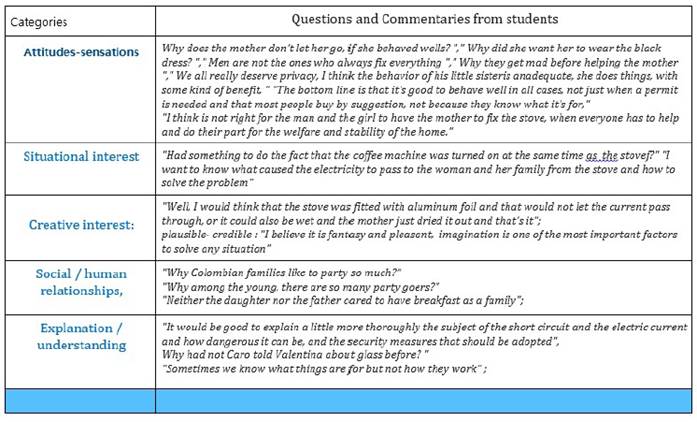
Figure 4: Results category: everyday related utility value. In this category, we investigate the attitudes of students towards the usefulness of comics in relation to their daily lives.
Cartoon and Motivation: the Likert scale
In this section, we analysed the results for each of the categories of motivation considered on the Likert scale. The scale was applied to the students once they already interacted with the CCCs and constructed questions about their content. The description of these results is organised according to scale categories.
Everyday related utility value
The students in this case value this category favourably, highlighting the usefulness of comics in the world outside their educational institution, as well as connecting them with elicitations of their personal experiences with cartoon’s characters.
Situational interest
Figure 5: Results category: situational Interest.
This category explores students’ attitudes towards the physics class with regard to the use of comics. The results show general acceptance towards the category in all its statements. Both with a rejection attitude towards the class and when feeling discouraged to learn, students favourably value the opposite Concomitantly, attitudes that express the desire to learn and their desire for the class itself are also favourable to the category of situational interest.
Importance
Figure 6: Results category: Importance.
In this category, students exhibit favourable attitudes towards the importance of the physics class in relation to the use of comic strips.
Here, students attributed great value to the classroom work and its relationship with the learning of physics.
Perceived Effort
Figure 7: Results category: perceived effort.
This category examines students’ attitudes towards perceived effort in the interaction with cartoons and their physics class.
The results show a significant favourability, both in the evaluation of their effort during the class and their self-recognition of the work to learn physics.
Personal interest
Figure 8: Results category: personal interest.
Personal interest is a key category on the motivational scale, as it mainly investigates the attitudes of students related to the taste for class and the motivation to share ideas.
The results show that the class of physics that involved the use of cartoons is motivating and fun (not boring), and generates a discussion of ideas.
Thus, the personal interest category has a significant favourable valuation from the students’ side.
Job related utility value
Figure 9: Results category: job related utility value.
This category inspects the usefulness of knowledge or the subjects of study in the physics classes in relation to the future life of students.
The attitude of the students in this category is very favourable towards the classes of physics in which they interacted with comic strips.
Questions
Figure 10: Results category: questions.
This category strives for student’s attitudes to formulate questions about physics. A significant percentage of students highlight that the cartoons are key for formulating questions about physics; however, at a medium rate they have difficulty performing this activity.
Creative Interest
Figure 11: Results category: creative interest
In this category, students were asked about their specific interest in developing their own productions in the format of cartoons.
In this regard, the students surveyed expressed a willingness to make their own cartoons in the physics class.
Plausible
This category investigates the students' perception of the cartoons content plausibility in relation to real-life situations. The answers received allow determining a favourable attitude towards the recognition of situations that are possible in real life, and that are immersed in the cartoon content.
Figure 12: Results category: plausible.
The motivation towards the physics class is significantly high, showing a large percentage (figure 13) for the study with the CCCs. Here students give a higher percentage to aspects related to: the importance of the class for themselves and their relationship with the school, the connection with topics or situations that may serve them in the future, and the value of what the cartoon presents in terms of knowledge of everyday life in everyday life situations.
Figure 13: General findings on the motivational scale.
In a second group of favourability, it is found that the students emphasise the physics class with the CCC as a space that makes them want to learn. Hence, there is a situational interest motivated by this context, and an identification with the need to strive for learning and an evaluation of the content of the CCC in terms of the likelihood of the situations that are presented there.
The third group of favourability is associated with the possibility offered by CCCs in the formulation of questions and their interest in creating similar narratives. All the sub-categories of the scale used are favourable to motivation; therefore, for the sample taken, under the conditions mentioned above, CCCs constitute a potential motivation for students towards the physics class.
Discussion and conclusions
CCCs allow the advancement of research in science education and particularly in physics education from perspectives that validate the need to ask questions in class. In particular, research regarding the teaching and learning of physics, where the solution of questions is a valid alternative to promote the construction of strategies and action plans by students, in this process a positive attitude towards the classroom is fundamental (Hammer, 1996).
The implementation of CCCs in class sessions allowed the formulation of questions in categories of scientific knowledge (physical phenomena), social knowledge, attitudes and values. This broad spectrum of questioning may enable new ways of recognising the dialogue of knowledge that must take place in physics classes. An example is the student’s questioning and commentaries regarding the CCC of the anti-spy filter, which are not just rigorously related to polarisation (Roncancio and Romero, 2017), but also present valuable and critic characteristics of social behaviour. These aspects are necessary in the physics teaching process, as they contribute to the conceptual review of science as a cultural activity.
CCCs have a didactic potential associated with student questioning as they reveal relationships between scientific concepts, which are usually addressed in the physics class. In this sense, CCCs can be integrated with didactic perspectives associated with problem formulation in the classroom (Balım, İnel, İnel-Ekici and Özcan, 2016), or with research-oriented teaching approaches (Roncancio and Romero, 2017). Thus, CCCs could be used both in theoretical physics classes and in the development of laboratory work in teaching, especially by recognising that there is a high relationship between student motivation and attitudes (Eryilmaz, Yildiz and Akin, 2011) that favours their implementation.
CCCs have a pedagogical potential associated with student questioning, as they reveal relationships between interdisciplinary concepts of social order. The attitudes of the CCC characters are questioned and made susceptible of being valued, compared with personal life situations and conjectured in the context. These elements should also be used by science teachers to promote a more realistic attitude towards the natural sciences, in which subjects can discuss their attitudes towards phenomena and hence recognise science as a cultural activity. Here, there is a possibility of strengthening learning environments and teaching methods with a view to improving attitudes towards science (Craker, 2006).
The use of CCCs in physics class is recognised as a context of motivation towards physics. According to the results of the application of the Likert scale, the average degree of favourability towards motivation is 71 %. It is important to note that no sub-category of the scale had a degree of favourability below 58,6 %.
References
Annex 1.
Figura 14: CCC The Stove®4
Annex 2
Figura 15: CCC The Lightning. ®5
Annex 3
Figura 16: CCC The Anti-spy Filter6
Licencia
Derechos de autor 2019 Jaime Duvan Reyes-Roncancio , Gloria Patricia Romero Osma, Edier Hernan Bustos-Velazco

Esta obra está bajo una licencia internacional Creative Commons Atribución-NoComercial-CompartirIgual 4.0.
El (los) autor(es) al enviar su artículo a la Revista Científica certifica que su manuscrito no ha sido, ni será presentado ni publicado en ninguna otra revista científica.
Dentro de las políticas editoriales establecidas para la Revista Científica en ninguna etapa del proceso editorial se establecen costos, el envío de artículos, la edición, publicación y posterior descarga de los contenidos es de manera gratuita dado que la revista es una publicación académica sin ánimo de lucro.

